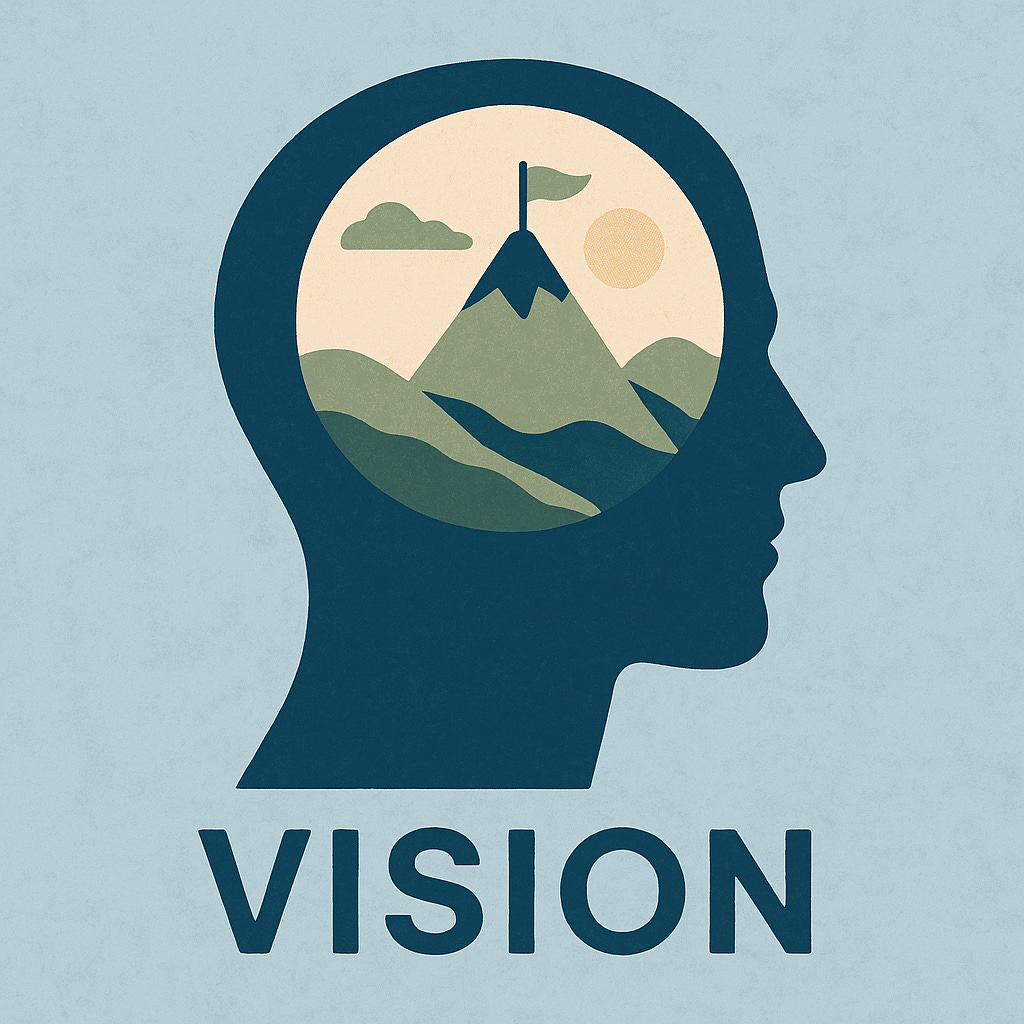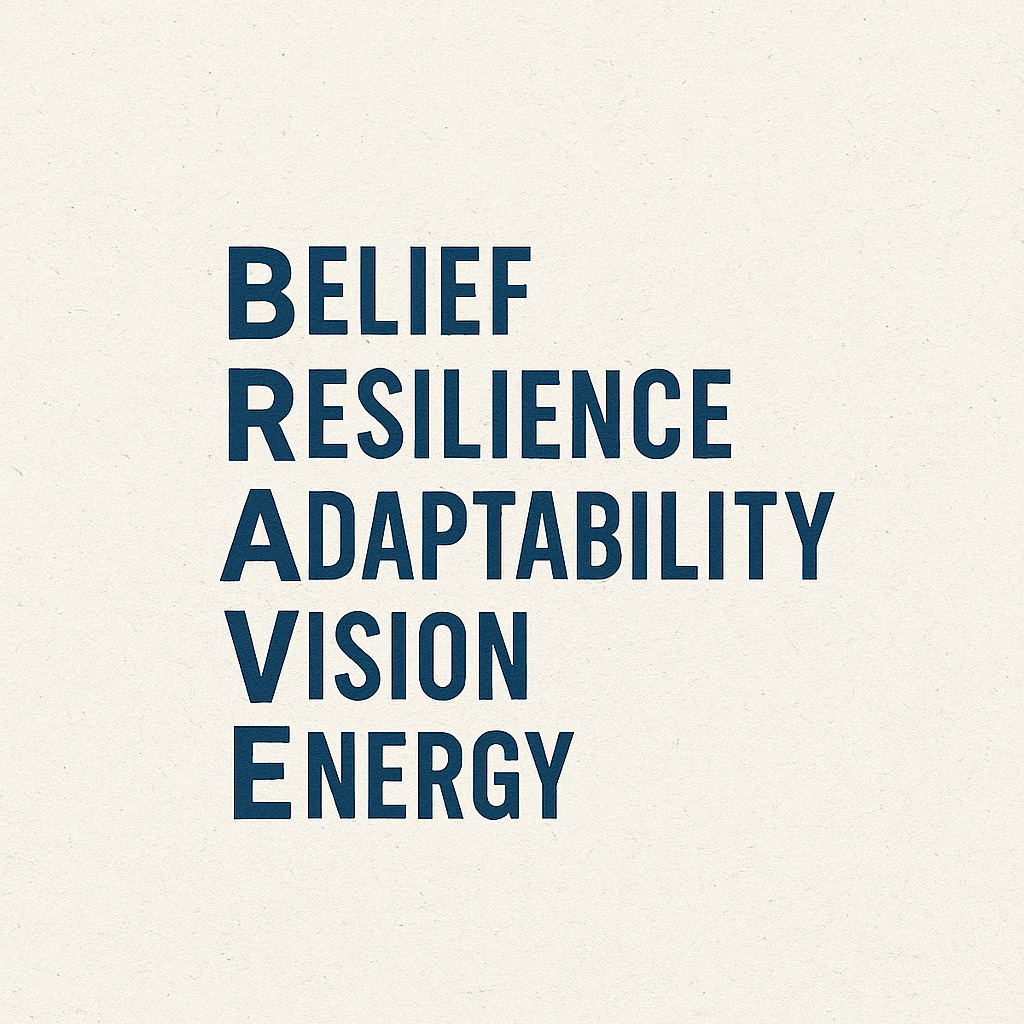Vision in Performance
Seeing the Path, Creating the Future
Within the BRAVE Performance Method, Vision serves as the compass guiding your actions. It’s more than goal setting, and includes creating a vivid image of your future success. This vision provides direction. It motivates action leading to consistency. When your vision is clear, your path has a purpose and your performance is driven by something bigger.
Vision is the art of mentally rehearsing your success before it happens. It’s seeing the journey swell as the outcome including the challenges, setbacks, and triumphs you’ll face along the way. When you engage in visualisation, the art of mentally simulating performance, you strengthen the neural pathways associated with that task. Research supports this, as studies show that mental imagery can enhance performance by activating the same brain regions involved in physical execution (Munzert et al, 2009). Athletes who visualise effectively are more prepared and confident and more likely to adapt when under pressure.
But Vision isn’t just a mental exercise. It starts with your values and is linked to your goals. When your picture of success aligns with what truly matters to you, we call this intrinsic motivation . According to Locke and Latham’s (2002) goal-setting theory, specific and challenging goals significantly enhance performance when they are tied to something meaningful to you the individual. A strong vision expands goals into something you can feel, imagine and go after with passion.
Within the BRAVE Performance method this means building a vision that reflects you and the outcomes you seek. Belief fuels your confidence to pursue that vision. Resilience helps you hold onto it through adversity. Adaptability allows you to modify your route when the landscape shifts. Energy powers the action it takes to bring that vision to life. Vision brings all the pillars together into the embodiment of your BRAVE mindset.
Creating your vision can be both a reflective and forward looking process. Start by drawing from your past experiences, moments of challenge and growth that taught you about your strengths, limitations and desires. Seek what you have learned matters most to you? Use this insight to shape a vision that aligns with your values and feels authentic. When your vision is value based, it becomes something you can pursue consistently and sustainably. (In the coming weeks I’ll post an article about finding and understand your values and how to discover your true values.) Think proactively about where you want to go, not just in your performance, but in how this aligns with your values and who you are becoming in the process. Your vision should feel familiar yet aspirational, centred around your experiences and driven by all your future possibilities.
To bring your vision to life, use practical tools to make it concrete. Write it down, describing in detail what success looks like for you. Speak it out loud to those you trust, which helps solidify your commitment and opens the door for support. Although choose your audience wisely, we all have someone in our lives who may not be as supportive of your aspirations as you’d like. Keep a visual reminder, such as vision boards or words on a notice board at home. These can keep your goals in the front of mind. Most importantly, commit to the process. Take the daily actions, however small, that are required to move you closer to the vision you seek. Progress is the goal, avoid seeking perfection, it’ll have the opposite effect. Your vision becomes more powerful the more you act on it.
Inevitably there will be times when your performance doesn’t go as planned, when you fall short of expectations or encounter setbacks, resilience is your friend. Resilience allows you to hold onto your vision when the path becomes unclear or difficult. It reminds you that growth is not linear and success is rarely a straight line. This ability to regroup, reflect and keep going helps you stay on the path to your long-term vision. Challenges are part of the journey, shaping your growth and sharpening your focus.
Whether you're preparing for a big performance, leading a team, or navigating personal growth, take time to create your vision. When you can see it clearly: What does success look like? How will it feel? Who are you becoming in the process? Hold onto that image. Let it shape your actions. Let it carry you forward.
References
Locke, E. A., & Latham, G. P. (2002). Building a practically useful theory of goal setting and task motivation. American Psychologist, 57(9), 705–717. https://doi.org/10.1037/0003-066X.57.9.705
Munzert, J., Lorey, B., & Zentgraf, K. (2009). Cognitive motor processes: The role of motor imagery in the study of motor representations. Brain Research Reviews, 60(2), 306–326. https://doi.org/10.1016/j.brainresrev.2008.12.024



